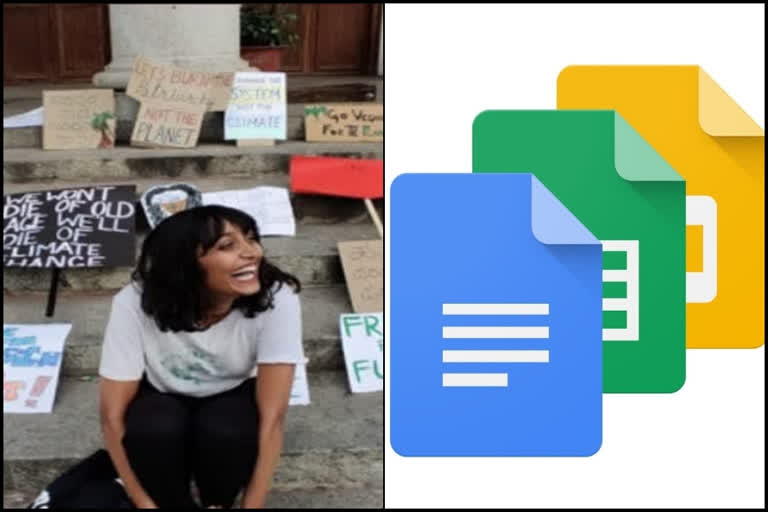Hyderabad: Disha Ravi, a 21-year-old climate activist from Bengaluru was arrested on Sunday for her alleged role in sharing a "toolkit" on social media related to the farmers' protests. Disha is under 5-day police custody.
Delhi Police have said that Disha Ravi is an editor of the "toolkit Google doc" and accused her of being a key conspirator in the document's formulation and dissemination. Police have also accused the activist of distributing the toolkit which was later used by Swedish activist Greta Thunberg.
The Swedish climate activist had shared a Google document called the "toolkit" on Twitter on February 5 but soon deleted that post. She later shared another "updated" version of the document on her social media which was shared widely. Police had subsequently lodged an FIR against "pro-Khalistan" creators of the "toolkit" for waging a "social, cultural and economic war against the government of India". The case has been registered on charges of criminal conspiracy, sedition and other sections of the Indian Penal Code.
Non-bailable warrants have also been issued against lawyer Nikita Jacob and engineer Shantanu Muluk, who are absconding, in the case.
So, what is a toolkit that is at the centre of the controversy?
Typically, a toolkit is a document or a booklet which is created to explain a cause or issue. It is a valuable resource that can be used to sustain a campaign on a certain issue. It can also include a plan of action for the campaign.
Toolkits are meant to offer practical advice and guidance regarding an issue of concern or importance—especially when the issue is emerging or evolving.
A toolkit can also provide information on what one needs to do to address and understand an issue. The document might include information about basic issues, petitions, details about protests and mass movements around.
Also Read: Acts of impropriety in activist's arrest, says lawyer Rebecca John
The toolkit shared by Greta Thunberg states, “This is a document meant to enable anyone unfamiliar with the ongoing farmers protests in India to better understand the situation and make decisions on how to support the farmers based on their own analysis."
